Molecular Basis of Inheritance CBSE Notes: CBSE and its curriculum are quite unique on their own and are well elaborated. The best part of CBSE is that they follow NCERT books to cover the syllabus. NCERT textbooks are one of the best academic books in India to teach students basic yet very detailed concepts in short and simple language. NCERT textbooks hold so much information that students and even sometimes teachers fail to extract the real meaning of the text. Well, it won’t be that difficult if you have notes that were created based on NCERT textbooks and use simple language.
This article comprises short revision notes for CBSE Class 12 Biology Molecular Basis of Inheritance. As per the revised Class 12 Biology NCERT textbook, this is now chapter number 5, and that explains DNA and concepts related to it. The processes and concepts explained in this chapter are new to students, so having such notes will be helpful. Find the revision notes for Molecular Basis of Inheritance below and download its free PDF as well.
CBSE Class 12 Biology Chapter 5 Revision Notes
Chapter 5: Molecular Basis of Inheritance
Introduction:
- The molecular basis of inheritance focuses on understanding how genetic information is stored, replicated, and expressed at the molecular level.
- DNA (deoxyribonucleic acid) is the molecule that carries genetic information in all living organisms.
DNA Structure:
- DNA is a double-stranded helical structure composed of nucleotides.
- Each nucleotide consists of a sugar (deoxyribose), a phosphate group, and a nitrogenous base (adenine, thymine, cytosine, or guanine).
- The two DNA strands are held together by hydrogen bonds between complementary base pairs (A-T, C-G).
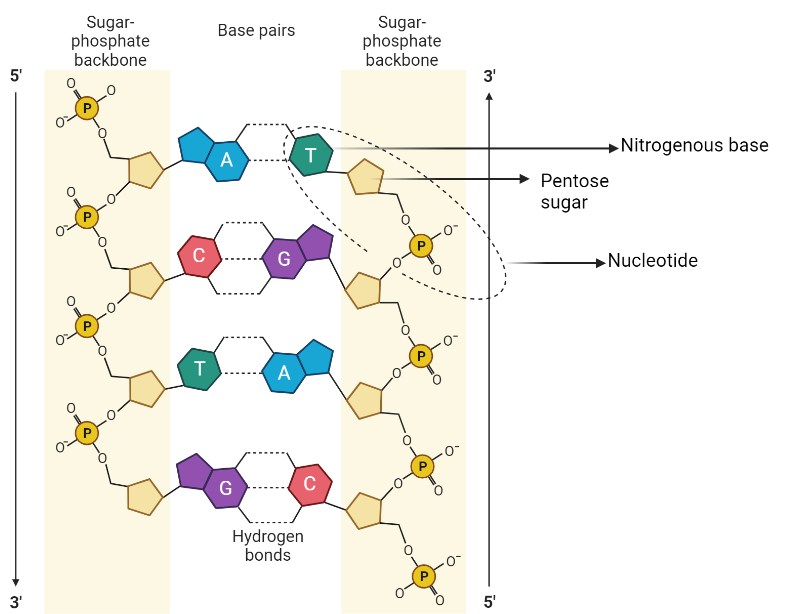
DNA Replication:
- DNA replication is the process by which DNA is copied to ensure the transmission of genetic information during cell division.
- It occurs during the S phase of the cell cycle and involves the unwinding of the DNA helix, separation of the strands, and synthesis of new complementary strands.
- DNA polymerase is the enzyme responsible for catalysing the addition of nucleotides to the growing DNA strand.
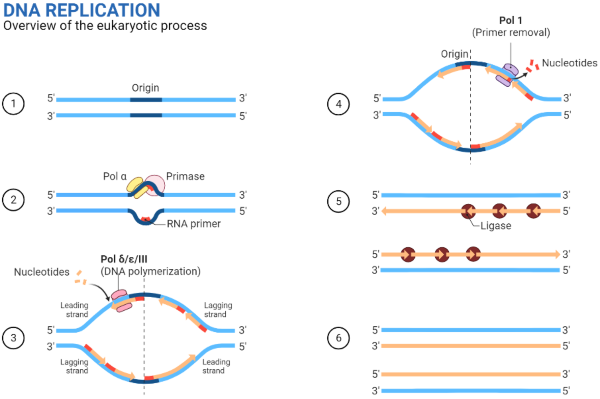
Transcription:
- Transcription is the process of synthesising an RNA molecule from a DNA template.
- RNA polymerase binds to a specific DNA sequence called the promoter and initiates transcription.
- The RNA molecule synthesised is complementary to the DNA template strand and is called messenger RNA (mRNA).
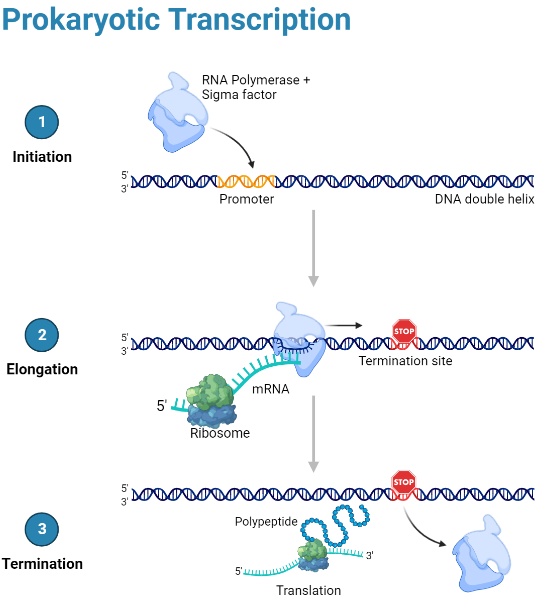
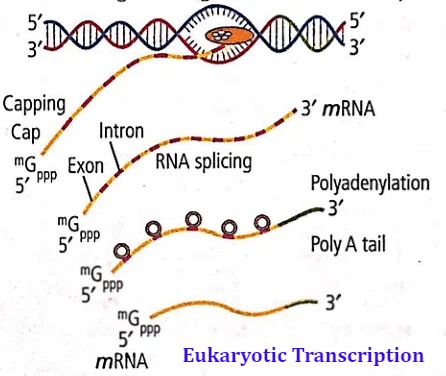
Genetic Code and Translation:
- The genetic code is the set of rules by which the sequence of nucleotides in mRNA is translated into the sequence of amino acids in a protein.
- Codons, consisting of three nucleotides, specify individual amino acids or stop signals during protein synthesis.
- Transfer RNA (tRNA) molecules carry specific amino acids and interact with mRNA codons during translation.
- Translation occurs in the ribosomes and involves the assembly of amino acids into a polypeptide chain based on the mRNA sequence.
![]()
Regulation of Gene Expression:
- Gene expression is regulated at various levels to control the production of proteins in response to cellular needs.
- Transcriptional control, post-transcriptional control, translational control, and post-translational control are mechanisms involved in regulating gene expression.
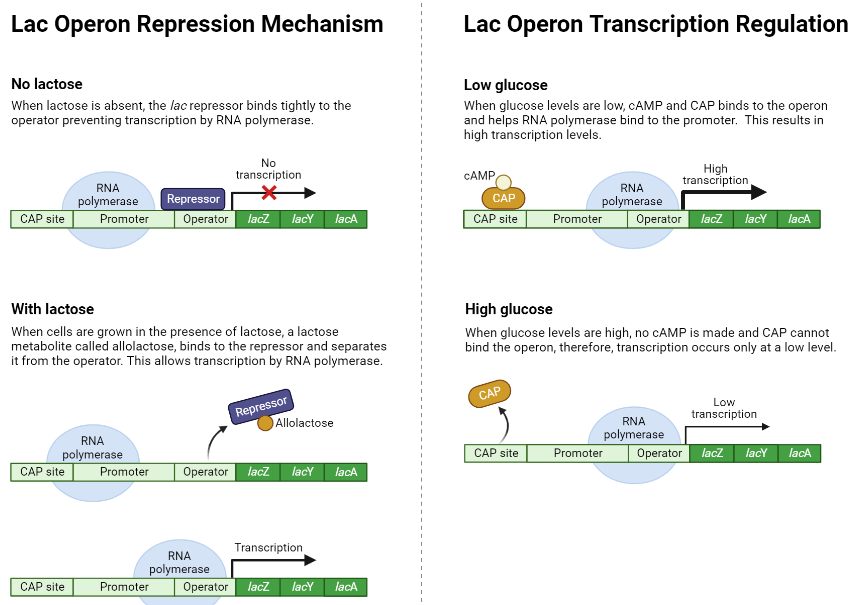
Read:
Mutations and Genetic Disorders:
- Mutations are changes in the DNA sequence that can occur naturally or be induced by external factors.
- Mutations can lead to genetic disorders such as cystic fibrosis, sickle cell anaemia, and haemophilia.
- Genetic counselling and prenatal testing help in the identification and management of genetic disorders.
Recombinant DNA Technology:
- Recombinant DNA technology involves the manipulation of DNA to introduce new genes into organisms for various purposes.
- Techniques such as DNA cloning, PCR (polymerase chain reaction), DNA sequencing, and genetic engineering are used in recombinant DNA technology.
Human Genome Project:
- The Human Genome Project (HGP) was an international scientific research project that aimed to map and sequence the entire human genome.
- It was initiated in 1990 and completed in 2003, with the main objective of understanding the structure and function of human genes.
Goals of the Human Genome Project:
- Determining the sequence of the human genome
- Identifying all the genes in the human genome
- Understanding the functional elements within the genome
- Analysing variations in the human genome
Significance of the Human Genome Project:
- Advancing our understanding of human genetics and biology
The HGP provided valuable insights into the organisation, structure, and function of the human genome, leading to a better understanding of human genetics and biology.
- Facilitating research on human diseases:
The availability of the human genome sequence has facilitated research on the genetic basis of diseases, leading to the identification of disease-associated genes and potential targets for therapies.
- Personalised medicine and healthcare:
The HGP has paved the way for personalised medicine, where genetic information can be used to tailor medical treatments and interventions according to an individual's genetic profile.
- Ethical, legal, and social implications (ELSI):
The HGP highlighted the need to address the ethical, legal, and social implications associated with genetic research, including privacy, genetic discrimination, and informed consent.
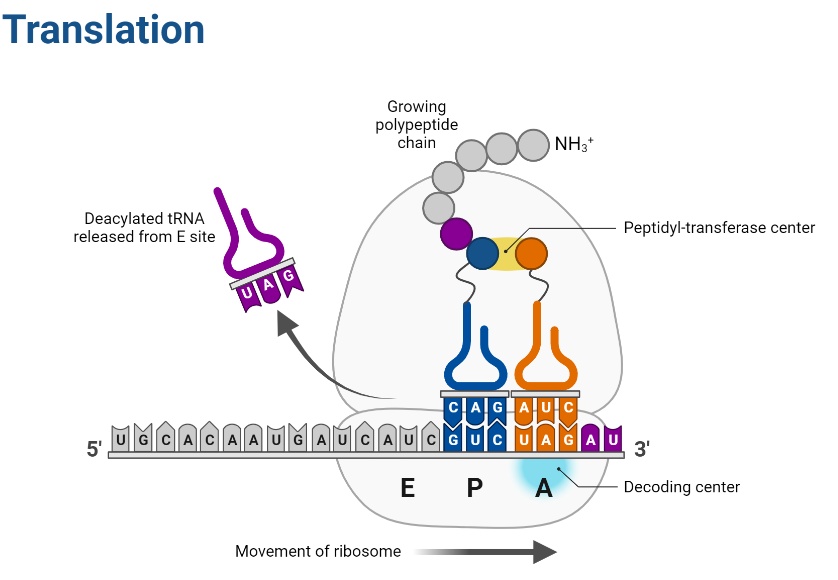
Comments
All Comments (0)
Join the conversation